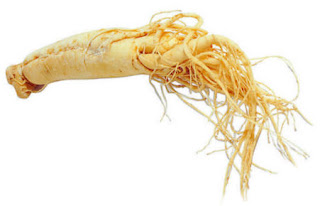More people are turning towards dietary ways to help manage type 1 and type 2 diabetes. In fact, studies have shown that diabetics are more likely to use dietary supplements than non-diabetics.
The herbs below have shown some of the most promising results in helping to treat diabetes. Keep in mind some natural supplements may interact with diabetic drugs, so always check with your physician before trying a new regime.
1. Green Tea A 2012 research study showed that mice fed an antioxidant found in green tea had a significant reduction in their blood sugar levels compared to mice that were not fed the antioxidant. They were given an amount that would be equivalent to a cup and a half of green tea to a human.
Interestingly, the antioxidant was most effective when it was fed to the mice with corn starch. This suggests that green tea could help humans control blood sugar spikes that often occur when we eat starchy foods, such as breads and other baked goods. The researchers pointed out that the most benefit would be to drink green tea at the same time as eating starchy foods.
2. Cinnamon A 2011 scientific review of eight different clinical studies found that they consistently showed the intake of cinnamon significantly lowered blood glucose levels in people with type 2 diabetes or prediabetes. The results showed benefits from both whole or ground cinnamon, or cinnamon extract.
Another study published in
Diabetes Care followed people with type 2 diabetes who took 1, 3 or 6 grams of cinnamon per day for 40 days. All amounts of cinnamon reduced their blood glucose levels, as well as their triglycerides, LDL cholesterol and total cholesterol.
This would suggest that 1 to 6 grams of cinnamon is a good daily target. It can easily be included in main dishes, desserts or breakfast items like smoothies. Cinnamon extract is another option that can be found at natural food stores.
3. Bitter Melon This is a green, oblong-shaped fruit that is often grown in tropical and subtropical regions, such as South America and Asia. It has a distinct warty texture on the outside skin. As the name suggests, it is highly bitter, but this can vary depending on where it is grown. It is also rich in vitamins and minerals.
The fruit contains at least three substances shown to have anti-diabetic properties: charantin, vicine and a compound similar to insulin called polypeptide-p. These may work individually or together to help reduce blood sugar levels.
A 2011 study showed that participants with type 2 diabetes who took 2000 mg of bitter melon per day had significantly reduced blood sugar levels.
Fresh bitter melon may be available in the produce section of your local imported foods or regular grocery store. It can be eaten plain, made into a juice or the seeds can be ground into dishes. If you make your own juice, it’s recommended to take 50 to 100 milliliters (3 to 6 tablespoons) of the juice daily. Don’t overdo it because excessive bitter melon intake can lead to diarrhea and digestive problems.
Bitter melon extract supplements may also be found in natural food stores.
4. Ginseng This Chinese herb has been shown to slow the absorption of carbohydrates and increase insulin production by the pancreas.
A University of Toronto study found that type 2 diabetics had a 20 percent reduction in blood sugar levels when they took 3 gram capsules of American ginseng either 40 minutes before or during a meal.
A recommended amount to take is 1 to 3 grams per day in capsules or tablets. A tincture of 3 to 5 milliliters three times a day could be taken instead.
5. Blueberry Leaf Research behind this herb is still limited, but the initial results are encouraging.
A study published in
The Canadian Medical Association Journal determined that blueberry leaf extract can have a stabilizing effect on carbohydrate tolerance in people with diabetes. This may allow a reduction in the amount of insulin being administered.
Another 2006 study found that a specific supplement product called Blueberin, which contains blueberry leaf extract, significantly reduced blood sugar levels in participants with type 2 diabetes.
6. Gymnema sylvestre The Hindi name of this plant,
gurmar, translates into “sugar destroyer.” It has been used to treat type 1 and type 2 diabetes in India for over 2000 years. It has been shown to help reduce blood sugar levels and may stimulate the production of insulin.
A study published in the
Journal of Ethnopharmacology found that a 400 mg daily dose of gymnema extract reduced the amount of insulin needed for people with type 1 diabetes.
A 2001 study showed that blood sugar levels were more controlled for both type 1 and type 2 diabetics who took 800 mg per day of a standardized gymnema extract.
7. Prickly Pear Cactus There is some evidence that prickly pear cactus can decrease blood sugar levels in those with type 2 diabetes.
The leaves, flowers, stems and fruit of prickly pear cacti are all edible. They are popular in many parts of the world, such as Latin America where the cacti grow plentifully. It’s also worth trying in northern regions if you can find some in your local grocery store.
Prickly pear cactus can be boiled or grilled, or made into juice or jams. It is also high in antioxidants, carotenoids and fiber.
8. Fenugreek This seed may be best known for its use in curries and Indian cooking. It has also been found to lower blood sugar and increase insulin sensitivity.
One study published in
Nutrition Research found that 25 grams of powdered fenugreek seed taken twice daily by people with type 2 diabetes helped to control their blood sugar levels and post-meal spikes in blood sugar.
Try including 15 to 90 grams of the seeds in your meals every day.





No comments:
Post a Comment